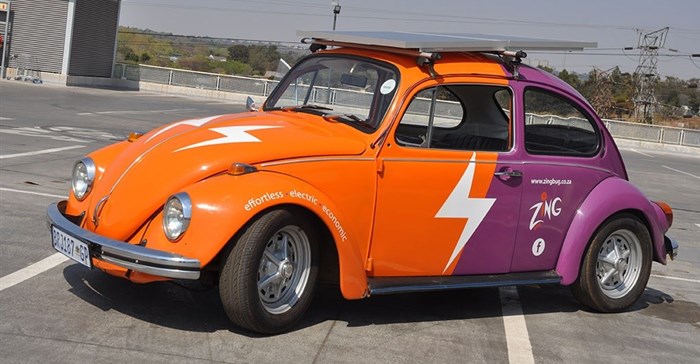
Top stories




Santa Scheepers is the woman behind this electric car, and participating in the Challenge forms part of her research and development into converting Beetles into affordable electric vehicles. In 2015 her zingBug was named Best Female-led Project in the Global Cleantech Innovation Programme in South Africa (GCIP-SA).
The GCIP-SA is implemented by the United Nations Industrial Development Organization (UNIDO) with funding by the Global Environment Facility (GEF). In South Africa, UNIDO is partnering with the Technology Innovation Agency (TIA) as the execution and hosting institution for the GCIP, while the US-based Cleantech Open serves as the main knowledge partner of the global programme. Two other GCIP-supported innovators will complete Scheepers' team in the Challenge, and will also be using the event for further testing of their technologies.
The ZingBug has a 48-volt electric motor, but due to the draw on battery reserves in stop-start conditions, André Reyneke of Miser Hybrid Transmissions, a semi-finalist in the 2016 GCIP-SA programme, is supplying a hydraulic motor to assist the electric motor. The hydraulic motor stores energy, from both engine optimisation and regenerative braking, as compressed gas in an accumulator. The computerised Miser management system then decides which power source to use. The ZingBug takes part in the Sustainability Fleet class and is allowed to recharge at any time.
André Nel of Green Tower, a runner-up in the 2015 GCIP-SA programme, developed technology to enhance the efficiency of solar power and will supply the management system that will optimise the solar-panel side of the recharging station.
The Sasol Solar Challenge is a biennial competition aimed at showcasing the power of alternative energy. Emphasising engineering and design, the competition gives South African and international innovators and university students in the disciplines of science, engineering and technology an opportunity to showcase their ingenuity by designing world-class solar-powered vehicles.
Participating teams are expected to design, build, and manage their solar-powered vehicles as they race across the South African terrain, covering a distance of at least 1,000km of varying road conditions. Eight of this year’s 14 entries are from South Africa. The Challenge starts on 24 September in Pretoria and draws to a close in Cape Town on 1 October, taking teams through Kroonstad, Bloemfontein, Graaff-Reinet, Port Elizabeth, Sedgefield and Swellendam along the way.